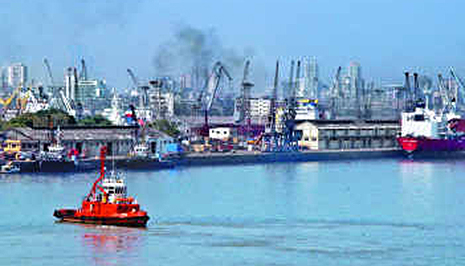MUMBAI - INDIA - ASIA
PORT INFORMATION

Mumbai says it is a city that never sleeps. Pulsating, alive, on the move, vibrant, fun – this is Mumbai or, as it is still frequently referred to, Bombay. Over the years, as colonialism gave way to independence, Mumbai has transformed itself into the most modern city in India, an entity with thriving markets, business houses and many different communities reflecting a cosmopolitan and trendy atmosphere rarely seen elsewhere. On the surface it represents the ever-changing face of today's India – the old coupled with the dynamic new, and yet at its very core, the heart of the city is steeped in Indian customs and values.
Cruise Terminals in Mumbai
Mumbai has two ports, Mumbai Harbour and Jawaharlal Neheru port. Mumbai Harbor and The Mumbai International Cruise Terminal is on the western side of the city at southern tip of the Ulhas River estuary, and though it is handily placed close to all the attractions and amenities of the city, it is not recommended to walk to and from the cruise terminal, but to take advantage of cruise ship transport to and from the airport and the local attractions.
Mumbai International Airport is located at a distance of 14kms from Mumbai port.
Finding a taxi from the cruise terminal is not that easy. Taxis are not allowed into the cruise terminal, and can only be found about ten minutes away on foot, and they have a reputation for over-charging cruise ship passengers.
To cater for the 25-30 international cruise ships now calling at Mumbai each year, plans are underway for a new “world Class” cruise terminal for Mumbai. More than 75,000 passengers pass through Mumbai each year, and this year, it is expected to cross 100,000.
Cruise Lines using the Mumbai Cruise Terminal as an Embarkation / Disembarking Port
The many major cruise lines operating in Aisa using Mumbai as a port of embarkation or disembarking include Costa Cruises, Crystal Cruises, Holland America Line, and P&O Cruises.Must See Attractions in Mumbai
The Mumbai cruise port is handily placed to see the famous Gateway of India. It is also the departing point for ferries plying to historic Elephanta Island (one of the six islands in the harbour) and other beaches across the port.
Gateway of India: Mumbai's most striking monument, built to commemorate the visit of King George V and Queen Mary to India in 1911, was designed to be the first landmark of (then) Bombay a visitor saw when arriving by ship. The Gateway welcomed numerous viceroys, governors and top civil servants as they disembarked by launch from their P&O steamers.
The Fort Area: The Flora Fountain stands on the site of the old church gate of the Bombay Fort, now a major crossroad. Other buildings to see in the Fountain or Fort area are the University of Mumbai buildings including the imposing Rajabhai Tower, the Mumbai High Court, the Old Secretariat, and the Institute of Science at one end. Close by is St Thomas Cathedral. The Western Railway Headquarters is also quite near. An exotic way of seeing these sights would be by the MTDC open-air bus or by the few surviving Victorias or buggy rides.
Chowpatty Beach: For a snapshot of Mumbai life make your way down Marine Drive – for the most part there’s a pleasant promenade – to the popular Chowpatty Beach, a teeming mass of people, vendors, masseurs, shooting galleries, snake charmers, monkey-trainers and roadside restaurants with their specialties bhelpuri and kulfi (local ice cream). Across the Chowpatty Beach area is the Taraporewala Aquarium. Marine Drive is also referred to as the Queen's Necklace because of the dramatic line of street lamps lit up at night.
Other attractions in Mumbai include Mani Bhavan (Gandhi Memorial), the Nehru Planetarium and the Nehru Science Center. Mumbai Amusement Parks include Essel World, Fantasy Land, Nishiland Water Park, Shangrila Waterpark, Suraj Water Park, and Water Kingdom.
